Watch classic films in spaces your grandparents once visited with Last Remaining Seats
The movie theaters of my youth were hardly palaces. They were largely generic multiplexes with the twins and triplexes giving way in the 1970s and ’80s to behemoths housing a dozen or more screens in auditoriums barely the size of your living room. Apart from the odd curio — the Cinedome in Orange, anyone? — it was strictly the movies that made the moviegoing experience memorable.
For earlier generations, it was very different. The tiny storefront nickelodeons that proliferated in big cities and small towns across the country gradually took over legit theaters and vaudeville houses. And then shortly after World War I, exhibitors began luring audiences with increasingly luxurious theaters that were definitely palatial. Even seeing the routine studio programmers became an event. In Los Angeles, these venues lined Broadway, their fortunes rising and falling over the decades with that of the downtown core. Most experienced a cycle that included periods of live performances, second-run status, an embrace of the Spanish-speaking culture, hosting churches and the recent gentrification of the area.
Special Report: Can moviegoing be saved? »
In 1987, the Los Angeles Conservancy launched its Last Remaining Seats series, giving contemporary moviegoers the chance to see classic films in spaces like the ones their parents, grandparents and great-grandparents once visited. This year’s lineup includes five Broadway theaters plus, for the first time, a foray to the South Bay with San Pedro’s Warner Grand.
1911
Palace Theatre, 630 S. Broadway
It opened on June 26, 1911 as the Orpheum, a vaudeville house that relocated from Spring Street. The bill that night included a young comedian named Ed Wynn, who went on to be a radio star, work in live television, voice the Mad Hatter in Disney’s “Alice in Wonderland” and earn an Academy Award nomination for “The Diary of Anne Frank.” The venue was rechristened the Palace and began showing silent films and newsreels after a new Orpheum opened in 1926. It became a full-time movie theater in the 1930s and continued until late 2000, when it became the last Broadway theater regularly screening movies. It reopened in 2011 as a live performance venue after a $1-million restoration.
Next screening: “La muerte de un burócrata” (Cuba, 1966), 8 p.m. June 14.
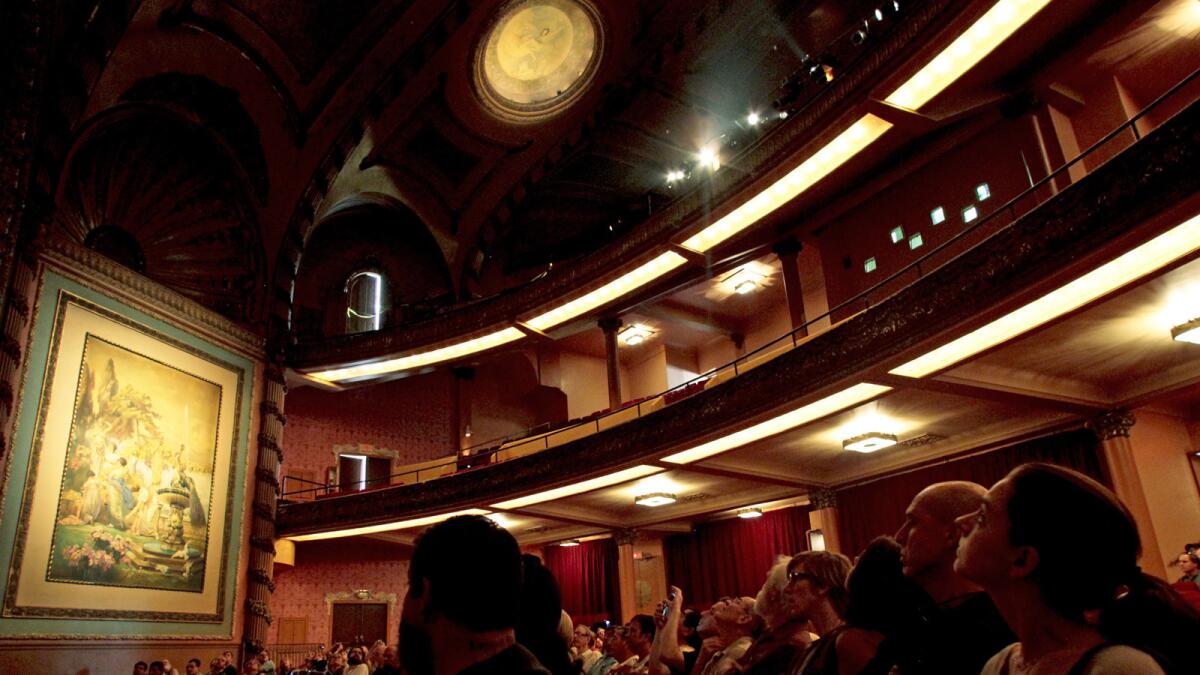
1918
Million Dollar Theatre, 307 S. Broadway
Simply called Grauman’s Theatre when it opened on Feb. 1, 1918, with William S. Hart in “The Silent Man,” its luxuriousness inspired The Times’ Grace Kingsley to write, “Remember the picture houses we attended only four short years ago? Dark, smelly little holes in the wall, most of them, at the door of which a mechanical orchestration ground out a dreary round of tunes which didn’t pretend to have any relation whatever to the picture or its theme …” The seven-digit price tag became part of the venue’s official name in 1922. Sid Grauman would soon sell his downtown theaters to concentrate on Hollywood proper.
Next screening: “Laura” (1944), 8 p.m. June 7

1926
Orpheum Theatre, 842 S. Broadway
When the new Orpheum opened on Feb. 15, 1926, as a vaudeville house with Ruth Chatterton headlining, it was compared to a luxury hotel. Five years later, an explosion rocked the premiere of the western “Cimarron,” starring Richard Dix and Irene Dunne. No publicity stunt, the blast, which injured two dozen, was attributed to an accumulation of sewage gas. The theater reopened in 2001 after a multi-million-dollar restoration and is one of the city’s prime music venues.
Next screenings: “L.A. Confidential” (1997), 8 p.m. June 3; “E.T. the Extra-Terrestrial” (1982), 2 p.m. June 24; and “Jaws” (1975), 8 p.m. June 24.
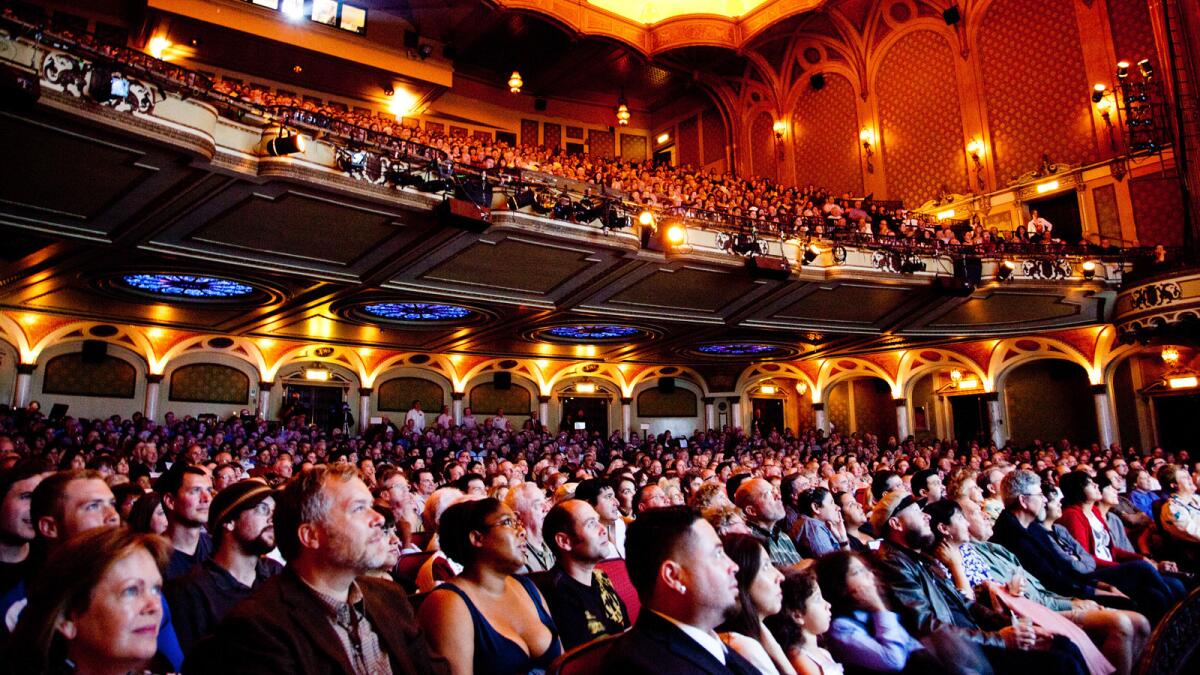
1927
The Theatre at Ace Hotel, 933 S. Broadway
When the United Artists Theatre opened the day after Christmas in 1927, with the premiere of Mary Pickford’s “My Best Girl,” the event was described as “superbrilliant” (yes, one word), the “most dazzling event in downtown theatrical history.” Launched as the flagship of what would be a nationwide chain of theaters, the venue actually closed for a time during the Great Depression. The Rev. Gene Scott bought the office tower and theater in 1986 and installed the famous neon “Jesus Saves” sign on its roof. The building reopened in 2014 as the Ace Hotel, with the theater used for a variety of live events and screenings.
Next screening: “Wings” (1927), 8 p.m. June 21.
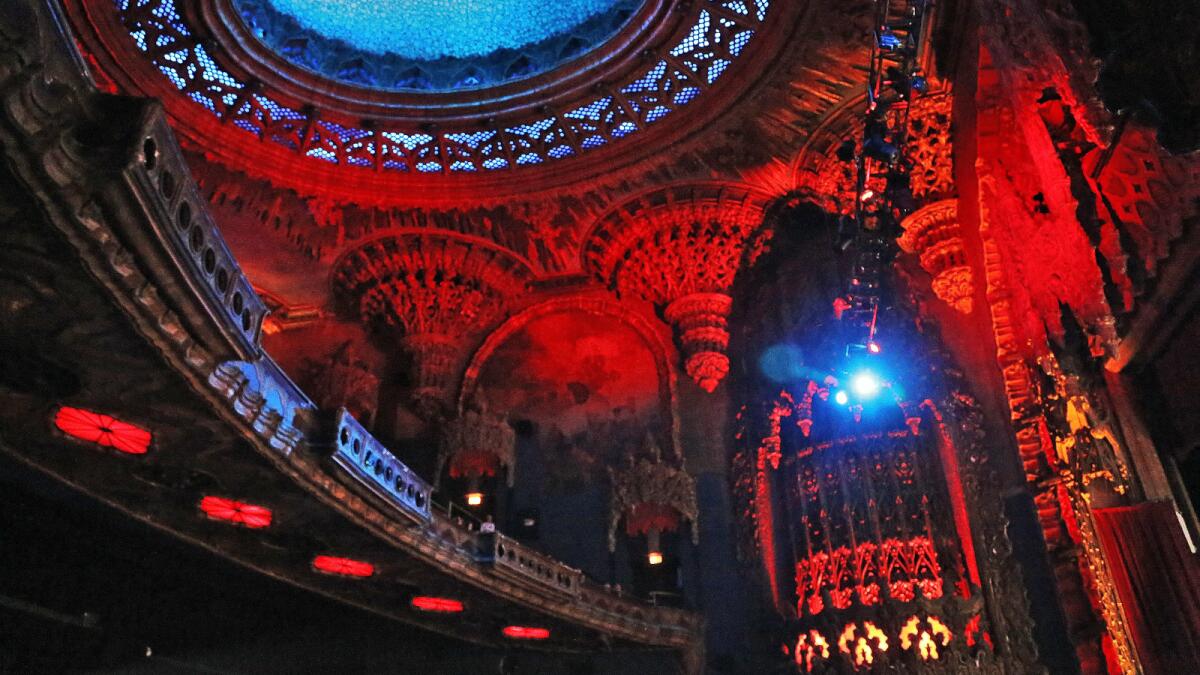
1931
Warner Grand Theatre, 478 W. 6th St., San Pedro
Built by
Next screening: “20,000 Leagues Under the Sea” (1954), 2 p.m. June 10; and “On the Waterfront” (1954), 8 p.m. June 10.
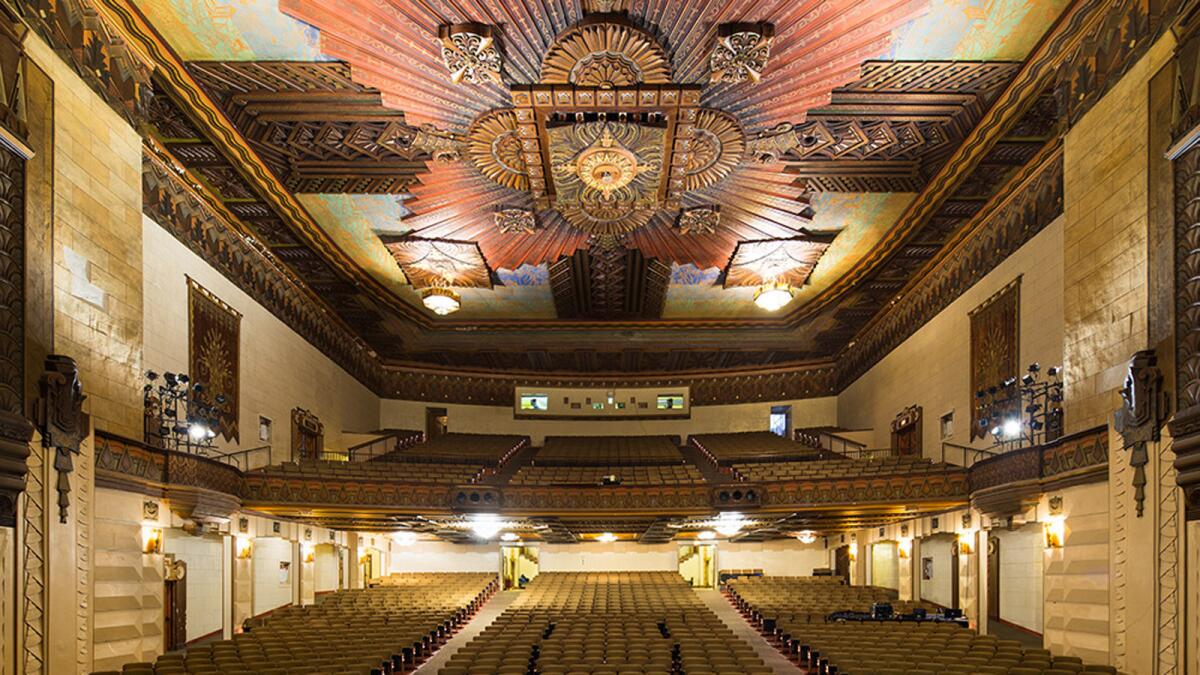
1931
Los Angeles Theatre, 615 S. Broadway
Characterized by its “unrivaled beauty,” the theater opened on Jan. 30, 1931, with the premiere of Charlie Chaplin’s “City Lights.” However, on April 1 of that year, the venue was placed in receivership, another victim of the bad economy. “Good pictures are scarce,” declared George M. Thompson, the gentleman placed in charge of reviving the emporium’s fortunes, proving that some things never change. On Dec. 4, 1992, the theater hosted the premiere of Richard Attenborough’s “Chaplin,” starring
Next screening: “Easter Parade” (1948), 8 p.m. June 17.
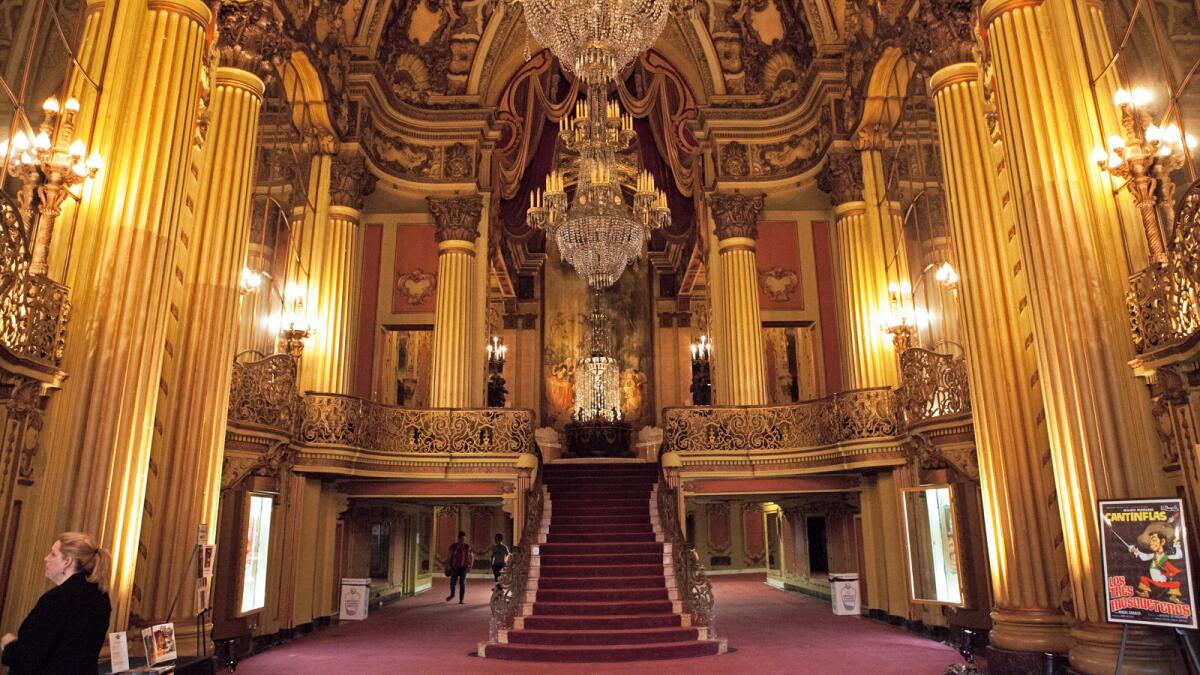
Only good movies
Get the Indie Focus newsletter, Mark Olsen's weekly guide to the world of cinema.
You may occasionally receive promotional content from the Los Angeles Times.








